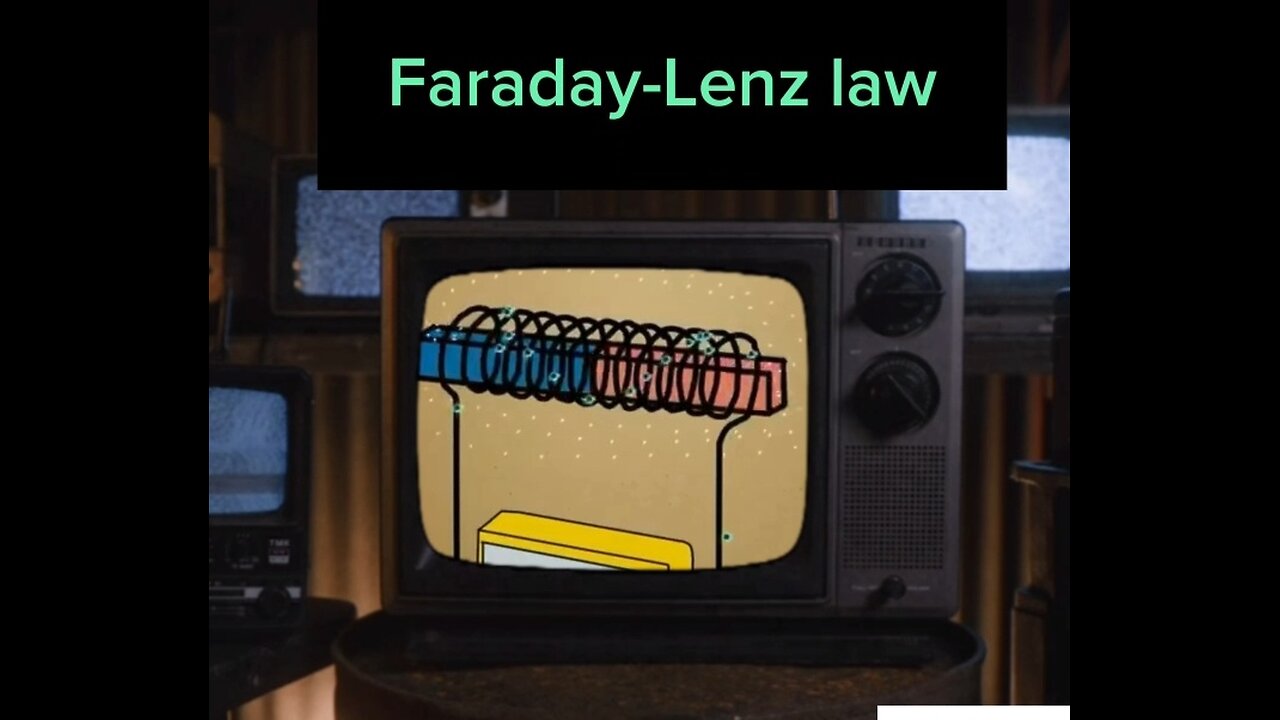Premium Only Content

FARADAY-LENZ LAW
Faraday-Lenz's law is a fundamental law of physics that describes the relationship between the electric current induced in a circuit and the change in the magnetic flux through the circuit.
History
Faraday-Lenz's law was discovered by Michael Faraday in 1831 and subsequently formulated mathematically by Heinrich Lenz in 1834.
Law statement
Faraday-Lenz's law establishes that:
"The electric current induced in a circuit is proportional to the rhythm of change of the magnetic flux through the circuit and opposes the change that produced it."
Mathematical formulation
Faraday-Lenz's law can be expressed mathematically as follows:
ε = -n (dφ/dt)
Where:
- ε is the electromotive force (fem) induced in the circuit.
- N is the number of laps of the circuit.
- φ is the magnetic flow through the circuit.
- D/DT is the temporal derivative, which represents the rhythm of change of the magnetic flux.
Meaning of the negative sign
The negative sign in the equation indicates that the induced current opposes the change that produced it. This is known as the "law of Lenz" and is a direct consequence of energy conservation.
Applications
Faraday-Lenz's law has numerous applications in physics and engineering, including:
- Electric generators
- Electric motors
- Transformers
- Inductances
- Resonant circuits
Importance
Faraday-Lenz's law is essential to understand how electrical and electronic devices work. It is an essential tool to design and analyze electrical circuits and is a basis for many modern technologies.
-
 2:05:49
2:05:49
Badlands Media
1 day agoDevolution Power Hour Ep. 336
59.8K14 -
 14:11
14:11
DeVory Darkins
8 hours ago $3.34 earnedFetterman SLAMS Democrats during shocking MSNBC Interview
15.7K29 -
 8:42
8:42
Chris Williamson
1 year agoThe Harsh Reality Of Our Collapsing Birthrate - Jordan Peterson
7.4K9 -

Alex Zedra
5 hours agoLIVE! Playing Split Ficition!
23.6K4 -
 2:51:38
2:51:38
TimcastIRL
6 hours agoGovernment SHUTDOWN IMMINENT, Democrats Vow To BLOCK Trump CR w/The Native Patriot | Timcast IRL
153K87 -
 3:38:57
3:38:57
Digital Social Hour
1 day ago $8.01 earnedAndrew Tate EXPOSES the Truth About Legal Battles, Politics & Masculinity | Andrew Tate DSH #1231
31K15 -
 2:26:29
2:26:29
Laura Loomer
6 hours agoEP108: Dems Embrace Domestic Terrorism To "Get Trump"
44.9K12 -
 3:01:51
3:01:51
Right Side Broadcasting Network
8 hours agoWATCH: NASA’s SpaceX Crew-10 Launch
90.6K38 -
 2:06:17
2:06:17
Glenn Greenwald
7 hours agoJudge Orders Hearing on Columbia Student Deportation Case; Is the Ukraine Ceasefire Plan Serious? Trump Attacks Thomas Massie for His Budget Vote | SYSTEM UPDATE #422
108K146 -
 47:16
47:16
BonginoReport
10 hours agoTrump-Elon Bromance Triggers The Libs (Ep.03) - 03/12/2025
143K269